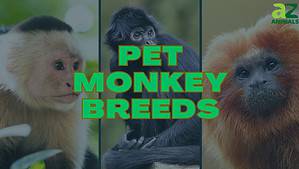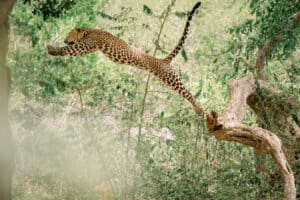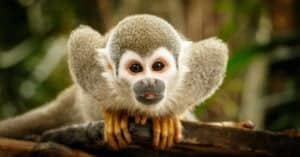Most people think of monkeys and apes when they hear ‘primates.’ But are monkeys primates, and are all these creatures primates? If so, what exactly is a primate?
In zoology, a primate is any mammal of the order of primates. This order includes monkeys, apes, lemurs, lorises, tarsiers, and humans. All these animals share specific characteristics, which is why zoologists group them in this order. Let’s delve into the specific characteristics that distinguish primates, and in this case monkeys, from other mammals.
Monkey Brain
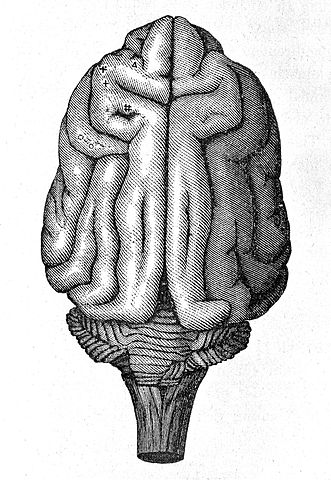
A monkey’s brain is far most advanced than most mammalian species.
© – License
When it comes to the brain, monkeys are a unique bunch. They boast some of the largest and most complex brains in the animal kingdom, partly thanks to their well-developed frontal lobes. This brain region is responsible for higher-level thinking, including planning, decision-making, and social cognition.
Other mammals have brains dominated by the limbic system, which is responsible for more basic functions like feeding, mating, and aggression. This difference in brain structure may help explain why primates like monkeys are generally more intelligent than other animals and why they are better able to adapt to changing environments.
Monkey Eyes

Monkeys are primates with superior binocular and color vision.
©Korovko Gleb/Shutterstock.com
Monkeys’ eyes are some of the most distinctive features that set them apart from other mammals and include them in the order of primates. For one, monkeys have forward-facing eyes, giving them binocular vision and depth perception. This perception contrasts with the lateral placement of the eyes of most other mammals, which offer poorer depth perception.
Monkeys, like all primates, rely on their improved sense of vision, unlike most mammals which depend on their sense of smell.
In addition, monkeys have color vision, whereas most other mammals are color-blind. Finally, monkeys have a tapetum lucidum, or reflective layer, behind the retina that helps them to see in low light conditions. When combined, these characteristics give primates superior vision to other mammals, making them better equipped to deal with their complex environments.
Monkey Fingers, Thumbs, and Toes
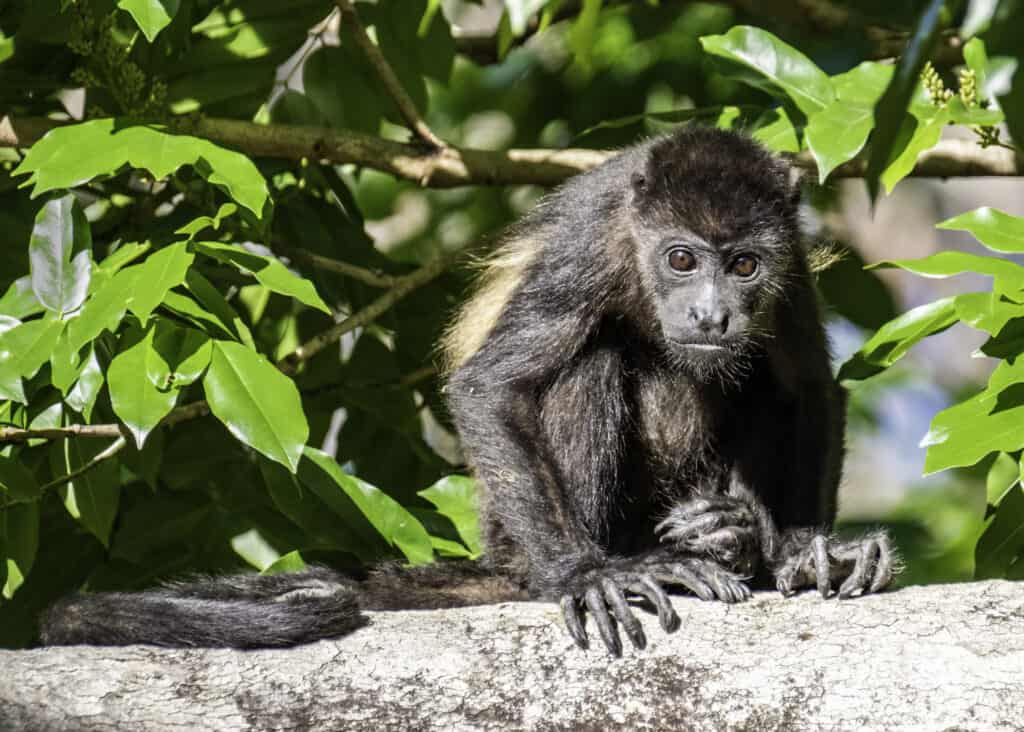
Monkeys have opposable thumbs and big toes.
©iStock.com/John Fader
As anyone who has played with primates can attest, they have distinctive characteristics regarding their fingers, thumbs, and toes.
For example, in all primates other than humans, the big toe (or hallux) is opposable to the other toes – it can act like a thumb.
But why do monkeys have these unique features? Scientists believe that the opposable thumb evolved as a way for monkeys to better grip branches and foliage while climbing around in trees. In addition, arboreal mammals (those that live in trees like monkeys) have grasping feet, which indicates that the present-day primates probably evolved from an arboreal ancestor.
As for the fingers and thumbs, all primates, including monkeys, are pentadactyl. This characteristic means they have five fingers on each hand. However, there are some slight variations among different primate species. For example, some have longer fingers than others; most have opposable thumbs, but a few do not.
These variations are likely due to the different lifestyles of different primate species. For instance, those that spend more time in trees tend to have long fingers that help them grip branches better, in contrast to those that live at ground level.
Monkey Hands and Feet
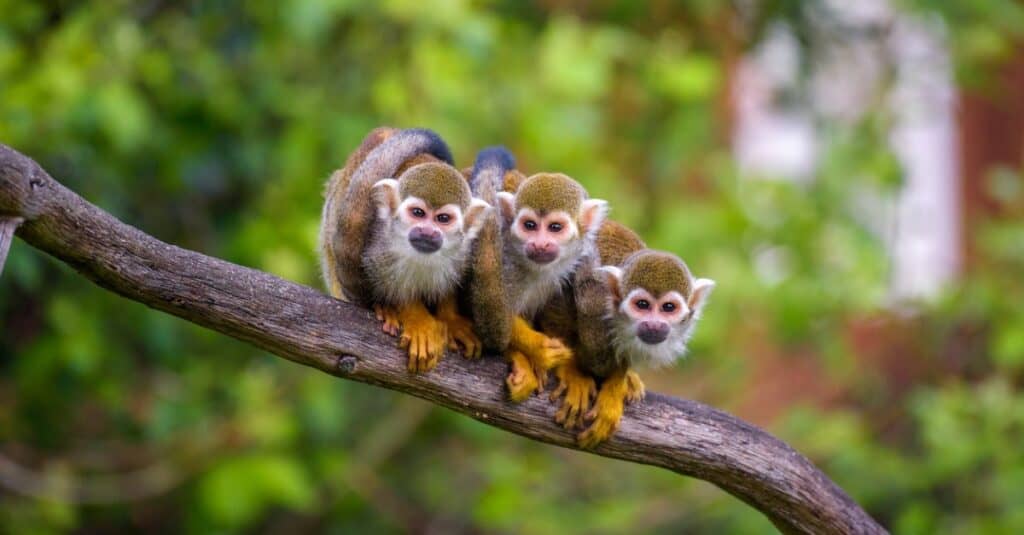
Monkey hands and feet have specialized nerve endings called Meissner’s corpuscles.
©iStock.com/miroslav_1
Monkeys, and most other primates, are unique among mammals. This uniqueness comprises specialized nerve endings known as Meissner’s corpuscles in their hands and feet. These corpuscles are highly sensitive to touch and allow primates to perform delicate tasks such as picking fruit or grooming fur. Other mammals do not have these same specialized nerve endings and are not nearly as nimble as primates.
Meissner’s corpuscles are just one of the many adaptations that allow monkeys to thrive in their environments. Their keen sense of touch has also enabled them to develop sophisticated social interactions and build complex societies.
Monkey Development
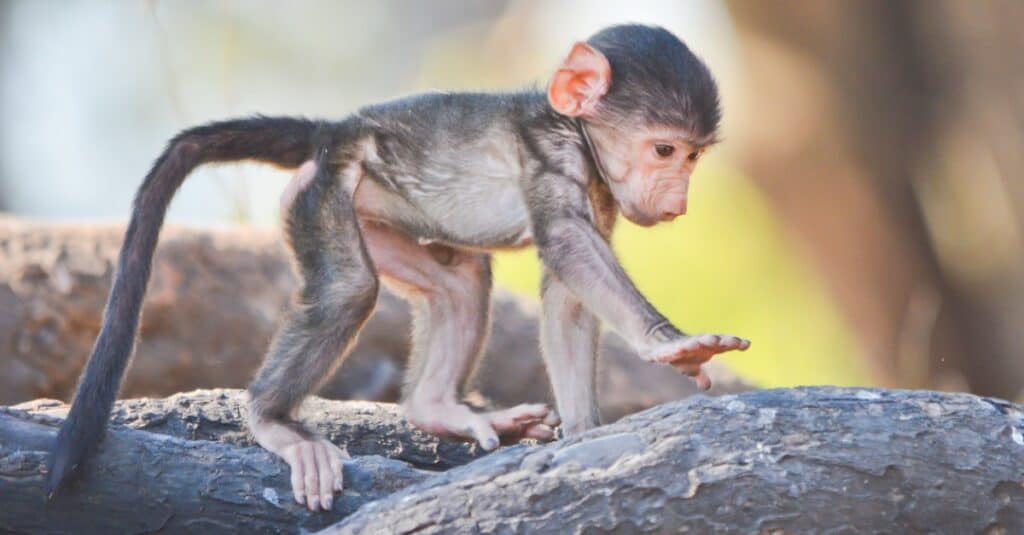
Monkey babies develop slower than those of other mammals.
©iStock.com/marcelauret
One of the most distinctive features of primates is their relatively slow rate of development. For example, monkey babies are born rather helpless and take longer to reach maturity than the babies of other mammals. This slow maturation factor is because primates have a longer lifespan than other mammals. The monkey’s average lifespan is about 25 to 30 years. In comparison, the average lifespan of a mammal is only about ten years.
Monkey Sexual Dimorphism
Sexual dimorphism is a trait that differentiates the sexes of a species in terms of size, coloration, or other physical characteristics. In primates, sexual dimorphism manifests in a variety of ways. For example, males of some monkey species are larger than females. In contrast, in others, females have significantly more body fat than males. Additionally, the canine teeth of males are often larger than those of females, and pelvises vary in width between the sexes. Finally, hair distribution and coloration also differ between males and females in many primate species.
Experts think that sexual dimorphism arises due to various factors. These factors include different mating strategies that the sexes employ and other selective pressures on males and females. For example, larger size may confer an advantage in a species where males compete intensely for mates. In contrast, traits that indicate good health and fitness (such as low body fat) are often preferable in species where females select mates. So, sexual dimorphism is a fascinating aspect of primate biology that can tell us a lot about the evolution and ecology of these unique animals.
Monkey Behavior

Primates like Wolf’s mona monkeys groom each other because they are social creatures with a complex familial structure.
©iStock.com/DejaVu Designs
One of the most pronounced differences between monkeys and other mammals is their behavior. As primates, they are generally more social creatures, living in groups of multiple individuals. However, they exhibit a great degree of intelligence within their troops. They are capable of complex communication and interactive problem-solving.
Another critical characteristic of monkeys, as opposed to other mammals, is their familial interaction. Where most mammalian species tend to be quite hierarchical, with a clear alpha male at the top of the pack, monkey groups are often more egalitarian. In many cases, females will form the core of the social group, with males coming and going as they please.
Monkey Mating
Mating practices among monkeys can vary significantly from those of other mammals. For example, while many mammals mate only during specific times of the year, primates may mate year-round. In addition, primates typically form long-term pair bonds, whereas many other mammals do not.
There are several explanations for why these discrepancies in mating practices exist. One possibility is that monkeys have developed more sophisticated mating strategies because they are relatively intelligent creatures. Additionally, because primates live in social groups, their mating practices may be influenced by the need to maintain social stability.
Whatever the reasons for these disparities, it is clear that the mating practices of monkeys are unique.
The photo featured at the top of this post is © Leo_nik/Shutterstock.com
Thank you for reading! Have some feedback for us? Contact the AZ Animals editorial team.



